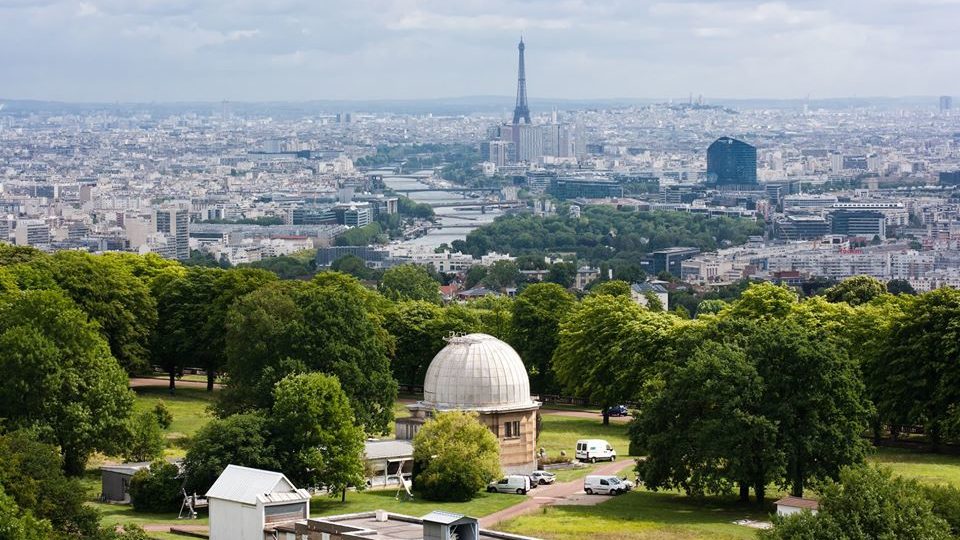Hidden Gems In Paris
Friends and acquaintances often ask which is my very favorite of all the places I’ve visited and written about in Paris. Having fallen in love with so much of the City of Light, this is a tough one to answer. But I will have to say that some of my most memorable destinations have been the most unusual; those that haven’t made the guide books. Some of these have given me new insights into familiar places, but many have taken me into unfamiliar territory; whether a museum, a cemetery, a park, or an entire quarter. Starting with one small focal point, you can let your explorations ripple outwards.
Paris is a city of endless surprises, and walking is the best way to get to know it. Walk if you can do so. Walk a lot. And if you tire of walking, there are plenty of scenic places and cafés along the way in which to rest. There also is a good Métro system to help you out on the longer stretches.
Get yourself a good map or maps. (I like the Michelin #11 Paris Atlas, which is a good size to put in purse or pocket). Get a sense of what is north, south, east, and west. FYI, the Left Bank is south of the Seine, Right Bank is north. And then, if you are like me, highlight possible destinations on your map with stick-on arrows. See if they make a pattern, and create walks. Pretty soon, you’ll be confidently exploring even the most outlying arrondissements of Paris.
Here Are Some Of My Favorite Discoveries Into Hidden Paris.
Sunrise, Sunset
For all of you, Claude Monet enthusiasts out there, the Musée d’Orsay, the Musée de l’Orangerie, and nearby Giverny are special surprises. However, you may not know that one of the most valuable collections of Monet’s paintings is located in a small private museum on the westbound end of Paris. At 2 Rue Louis-Boilly, there is the Musée Marmottan-Monet, situated at the far side of a beautiful park called the Jardin du Ranelagh. Here, you will find Monet’s “Impression, Sunrise,” the painting that gave the Impressionist movement its name, among many other artworks. This painting was stolen in an armed robbery in 1985 and disappeared—for good, or so everyone thought.

However, religious police work finally discovered it in Corsica in 1990. It is peacefully hung on the Marmottan’s walls ever since, enchanting thousands of visitors every year. Now that you have observed Monet’s “Sunrise,” you should also appreciate Monet’s “Sunset”; there’s a fine example in the charming but often-overlooked museum of the Petit Palais. Here, in this wide-ranging (and free) collection owned by the City of Paris, you will find Monet’s “Sunset at Lavacourt”. Admire your discovery with a snack in the museum’s beautiful garden and stay for a while, quietly daydreaming. After all, Monet would demand no less.
Where’s Vélo
Here’s a good “Where’s Waldo?” game for you and any kids in your entourage, and it’s right near the Invalides. Head directly south from The Dome Church (Napoleon’s last resting place) until you reach the church of St-François-Xavier on your left. This happens to have been Charles de Gaulle’s parish church when he was growing up here; that shouldn’t concern you now. Turn into the little park that parallels the north side of the church. At the park’s entrance, stop. Can you find the bicycle? Look carefully, because it’s well-hidden beneath a bunch of flowering plants, which its frame so whimsically supports.
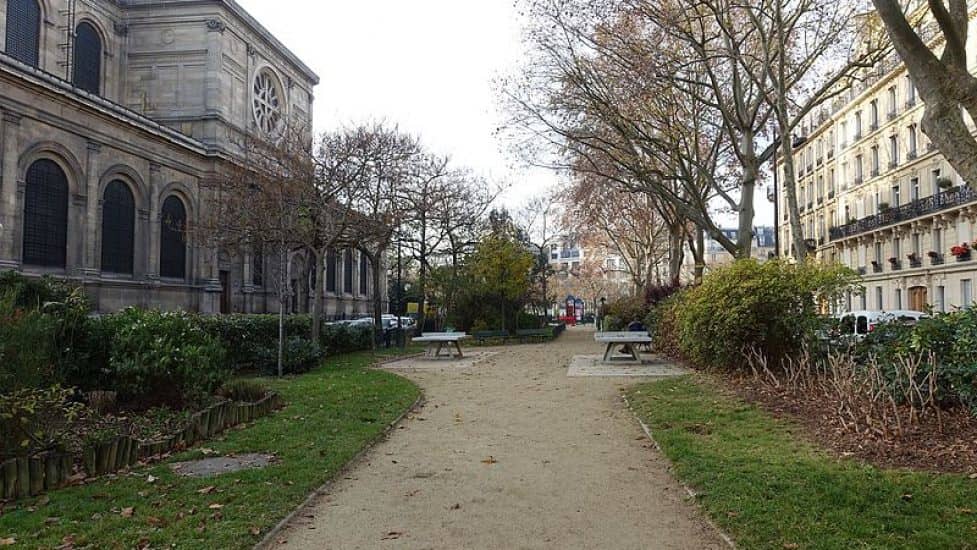
In addition to providing some chuckles, this amusing flower bower will get you off the beaten path and into new territory; perhaps, say, a visit to nearby UNESCO headquarters, with its lovely Japanese garden plus works of art contributed by some of the world’s leading painters and sculptors. And, just across the Place de Fontenoy, you’ll find the magnificent Ecole Militaire. It was designed by Jacques-Ange Gabriel, where young Napoleon Bonaparte received his military training. Napoleon, de Gaulle, and a hidden bicycle; something for everyone!
Nagasaki Angel
Precisely at 8:15 a.m. on a hot and sunny August 6, 1945, a B-29 Superfortress unleashed its atomic cargo on Hiroshima, leveling the city and killing 130,000 people. Three days later, another Superfortress dropped an even more powerful atomic bomb (“Fat Man”) on Nagasaki, instantly vaporizing the Place. In Urakami, on Nagasaki’s outskirts, the largest Roman Catholic church in Japan collapsed into a pile of scorched rubble. But as the devastated survivors combed their church’s ruins, they found an unexpected ray of hope; a fragment of a sculptured angel that had miraculously survived. Her torso had crumbled into dust, but her head and wings remained intact. Even her lovely face was still recognizable, although the bomb’s blast had marred one of her eyes, making her appear; on the first glimpse; as if she had been crying.
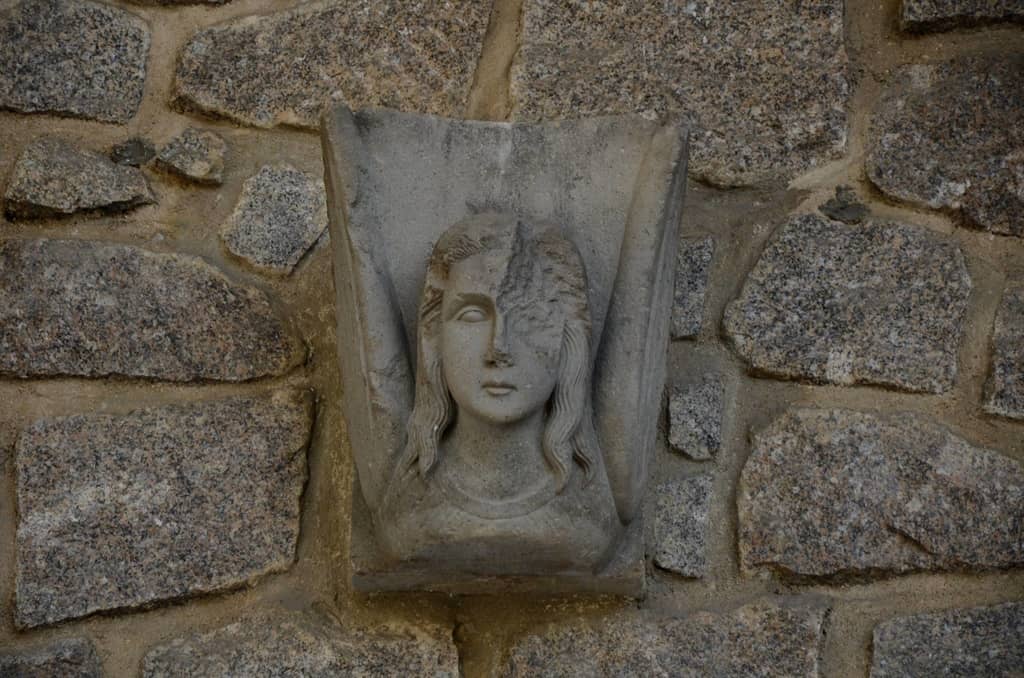
This treasure, known as the Nagasaki Angel, is now sheltered at the Paris headquarters of UNESCO, the United Nations Educational, Scientific, and Cultural Organization. You will find her nestled against a wall at the top of UNESCO’s tranquil Japanese water garden, the Garden of Peace. A more poignant and powerful plea for Peace on Earth is difficult to imagine.
•UNESCO: 7 Place de Fontenoy, 7th (near the Eiffel Tower).
A Medieval Tower’s Secret
Long ago (1409-11), a duke on the run built a fierce defensive tower along what then was the edge of Paris, right up against its twelfth-century wall. The duke was Jean-sans-Peur, Duke of Burgundy, and his magnificent tower still survives; thanks to the dedicated work of a private association, which has recently restored the tower and opened it to the public. Jean-sans-Peur’s tower is a beauty, and you shouldn’t miss the opportunity to climb its winding stone staircase, which is a fabulous adventure into the past.
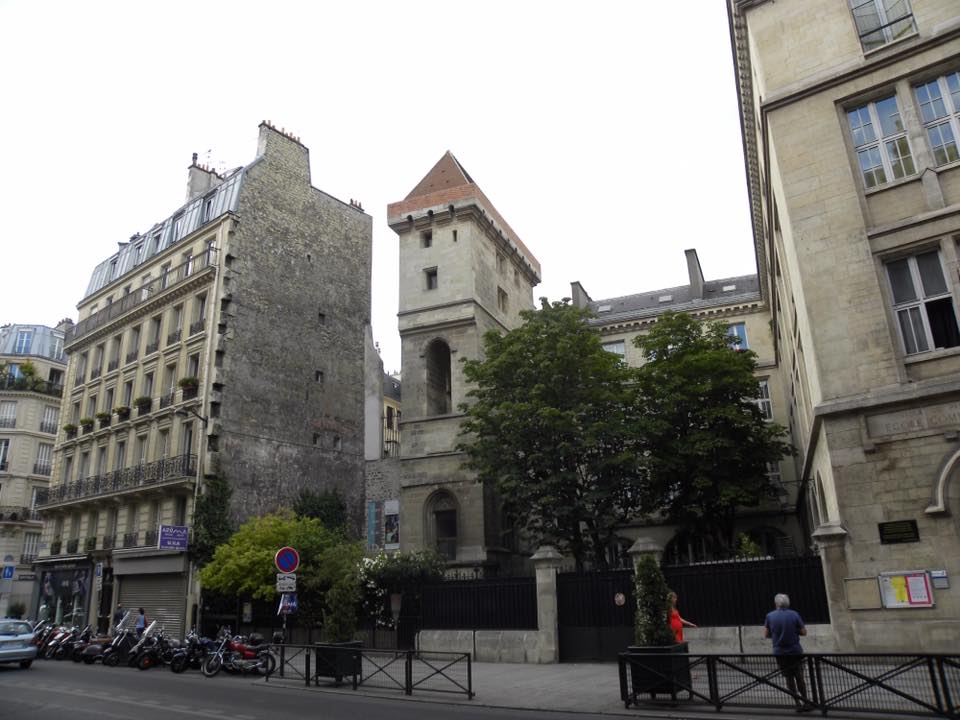
But you should also know that this tower has a secret. Because even though the twelfth-century wall against which it was built has long since disappeared, a portion still remains, including the base of one of its own many towers. Just look into the little room to the left as you enter the Tour Jean-sans-Peur for this hidden tower within a tower.
•Tour Jean-sans-Peur: 20 Rue Etienne-Marcel, 2nd.
Bring Your Own Bottle
For centuries, Passy’s waters were renowned for their healing properties, attracting affluent Parisians with a variety of ailments as well as those who simply wanted to escape the intensity of city life. So it probably was not surprising when in 1855, as artesian wells were being drilled around Paris, someone had the bright idea of drilling downward for those therapeutic waters of Passy. What these entrepreneurs did not realize was how far they would have to drill. It would be six years before water would gush from the Passy probe, depleting its investors’ patience and pocketbooks as well as the water pressure at a nearby well.

Soon better alternatives were found to provide the neighborhood with water, but the waters of Passy still flow reliably from two spigots in a small park where the mouth of the artesian well once opened. Bring a cup or a bottle, and join all the others who bring their empty jugs to fill here. The water is warm but tasty, and some still swear to its therapeutic qualities. Sorry, though—no bubbles.
•Square Lamartine, on Avenue Henri Martin at Rue Spontini, 16th.
The Best Ice Cream in Paris
Here is a charming corner of Passy, Pascal Combette and his wife have established a sparkling shop specializing in some of the finest ice cream and sorbets you could ever hope to meet. This couple’s secret lies in perfection-driven hard work, superb ingredients, and long family tradition—including some splendid old family recipes. The results are proudly artisanal or hand-crafted; together the Combettes hand-make each small batch of sorbet and ice cream in a stunning array of 68 flavors. The results are nothing short of spectacular. In the mood for sorbet? Try the rhubarb or mirabelle plum. Or the white peach or blood orange. You really can’t go wrong—only fresh fruits and Evian water are used, and the flavors positively sparkle.
If you are yearning for ice cream, be daring and try the réglise (licorice) or the pain d’ épices (gingerbread). But if you prefer to stick to vanilla or chocolate, you can never go wrong with Pascal’s Tahitian vanilla, while his chocolate ice cream is deep chocolate, delectable whether you take it plain, mixed with orange peel, or combined with fruit and nuts.
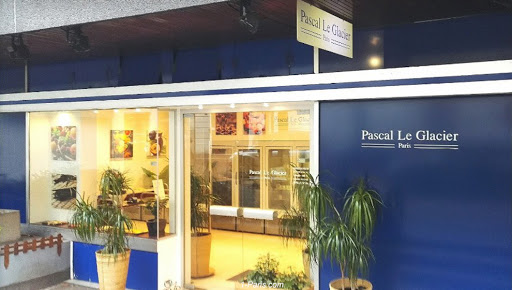
•Pascal Le Glacier: 17 Rue Bois-le-Vent, 16th. Open Tues-Sat, 10:30am-7pm. Closed Sun/Mon. Note: Pascal changes the flavor selection seasonally and does not carry fresh fruit sorbets or some ice cream flavors in winter.
Eiffel’s Tower View
Just over the northwest border of Paris, in the flower-filled town of Levallois-Perret. There, lies a hidden link to the Eiffel Tower, the extraordinary structure that has come to symbolize Paris itself. Here, in an extensive cemetery bordering the Seine, lie the mortal remains of Gustave Eiffel; not far from the site of his famous workshops. These no longer exist, and Levallois-Perret is now filled with parks and apartment buildings where workshops used to reign. But Eiffel’s imposing tomb is a reminder of an earlier era when this engineering giant was forging the iron substructures for bridges and buildings all over the world. Of his many achievements, it was Eiffel’s tower that capped his legend; although few are aware of it, even in death, he and his tower are linked.
If you take a close look at his tomb, you will soon realize that it is out of alignment with its neighbors. That is because, in a fitting tribute, it faces south towards Eiffel’s masterwork, the beloved tower that bears his name.
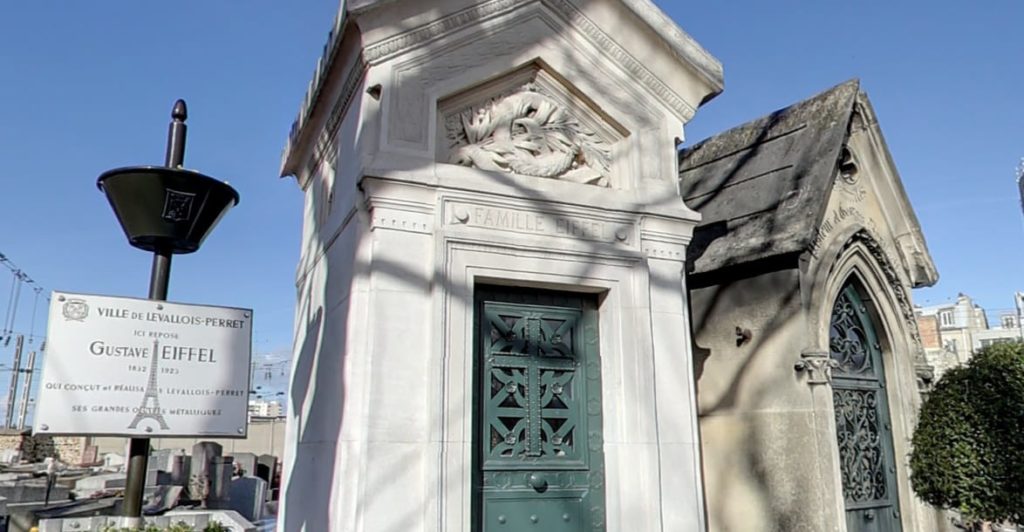
•Eiffel’s tomb is located in Emplacement 10 in the Cimetière de Levallois-Perret, entrance on Rue Baudin. If you’re inclined to wander, you’ll find Maurice Ravel’s tomb as well, in Emplacement 16, near the cemetery entrance.
>>Also Read: Cemeteries In Paris Worth Visiting, Famous People Buried In Paris
The Statue of Liberty’s Sister
You enter the medieval abbey church of St-Martin-des-Champs and do a double-take. For there ahead, at the top of a curving ramp, stands an unmistakable Statue of Liberty. Smaller than the one in New York City’s harbor, but still a dead-ringer for the original. What on earth, you wonder, is she doing here? The church in which you are standing is now part of the Musée des Arts et Métiers, or museum of industrial sciences, and you are looking at a scale model of the Statue of Liberty; 1/16 the final version (about 9.5 feet, not including the pedestal). Her creator, Frédéric-Auguste Bartholdi, used this scale model to fabricate the actual Statue of Liberty (1875-1884), after magnifying the model to one that was four times larger and then dividing the quarter-size model into sections that he enlarged to their ultimate dimensions.
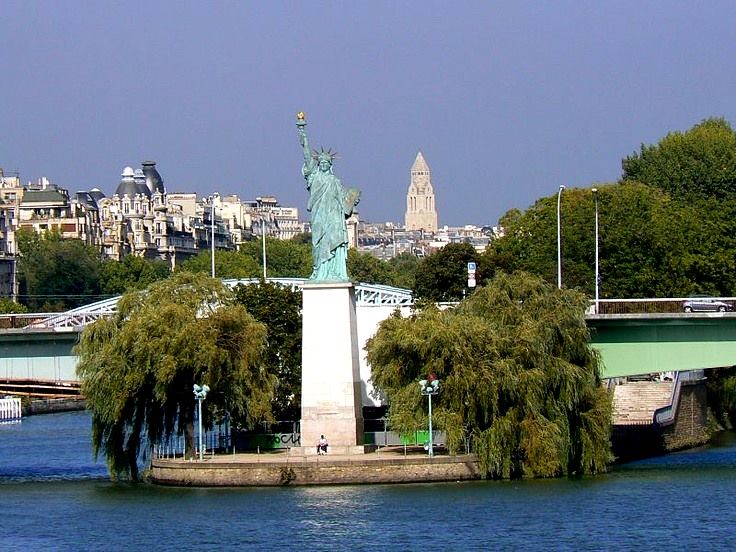
The Musée des Arts et Métiers commemorates the Statue of Liberty’s remarkable construction process with this scale model plus two small reproductions of the Paris foundry where Bartholdi wrought his colossus. There is also an impressive full-sized replica of her index finger. By the way, this Lady Liberty has two Paris sisters; a virtual twin (see if you can find it in Luxembourg Gardens) as well as a quarter-sized version on the Ile des Cygnes.
•Musée des Arts et Métiers: 292 Rue St-Martin, the entrance is at 60 Rue Réaumur, 3rd.
The Headless Saint
The next time you are standing in front of Notre-Dame, look closely at its left-hand portal. There you will find a rather strange sculpture of a saint, complete with halo, holding his head in his hands. This is Saint-Denis, the first bishop of Paris, who met his death around 273 A.D., almost two thousand years ago. The Romans, who then occupied Paris, already had their hands full with defending the city from barbarian hordes when this charismatic Christian came into play. According to the tale, Roman soldiers tortured Denis near the present site of Notre-Dame and then took his head on the hills of Montmartre. Then the martyred saint shocked everyone by picking up his head and walking northward almost 4 miles; then he collapsed on the site now marked by the Notre Dame Cathedral that bears his name.

No matter that the legend was created centuries afterward, probably by the monks of Saint-Denis. It gave their abbey and their founder a special aura; Denis went on to gain a special prominence among French saints. His church became the common burial place for French royalty, and his legend endured through the centuries. This is why, on the portal of Notre-Dame or wherever you see him depicted, he is the saint who holds his head in his hands.
•Notre Dame Cathedral, 4th.
Park Perfect
Paris is filled with wonderful parks, but many of these are virtually unknown to non-Parisians. One of these is the charming landscape garden, Parc Monceau; it occupies a high-rent district in the 8th arrondissement, abutting the 17th. This park is the legacy of Philippe, Duke of Orléans, who capped a life of dissolution by shrewdly reinventing himself as Philippe-Egalité, a revolutionary champion of the common man. Scarcely a year after casting his vote for Louis XVI’s execution, politically ambitious Egalité followed his king to the guillotine; but not before carving out a garden of enchantment at Monceau. The current park is, in fact, only a portion of Philippe-Egalité’s original retreat: the rest has become one of Paris’ most elegant quarters. Yet the colonnaded pool, several follies, and some delightfully romantic bowers remain, as does the rotunda that still graces Monceau’s northern entrance.
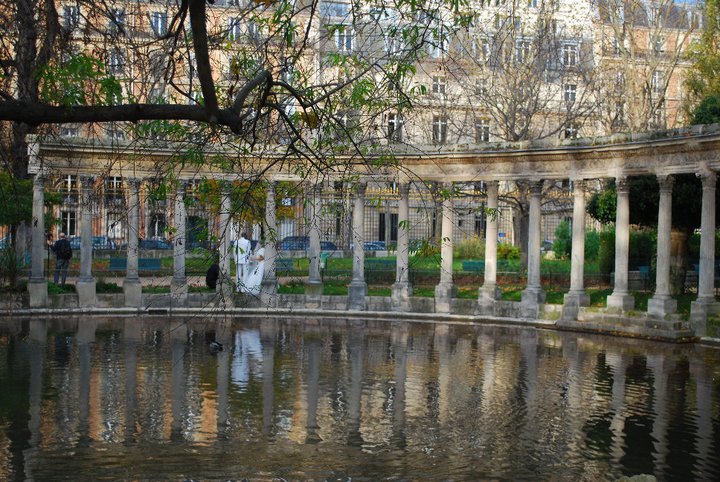
Ironically, this is the same rotunda that in Egalité’s day housed a team of hated tax (or customs) collectors, who originally set Paris on the path to Revolution (Monceau’s northern border follows the path of a now-demolished tax wall, built around all of Paris in the 1780s). Today, there is not a tax collector in sight. Instead, you will probably see mothers and nannies walking their children, while elderly dowagers softly gossip among the shimmering flowers.
•Parc Monceau, main entrance on Boulevard de Courcelles, 8th.
Regard de la Laterne
This mysterious little building—windowless, and with its one solitary door bolted shut—looks like a secret meeting place for some forgotten sect. But it’s not. It’s called the Regard de la Lanterne; once, it presided over an ancient source of Paris water, the medieval aqueduct of Belleville. Long ago, two monasteries tapped into the many small springs north of the city by using simple stone-lined trenches. These trenches ended at small collecting basins or settling pools placed inside buildings called “regards.” The Regard de la Lanterne, as the head regard in its system, had the job of collecting the water from several trenches and sending it, via aqueduct, along its way.
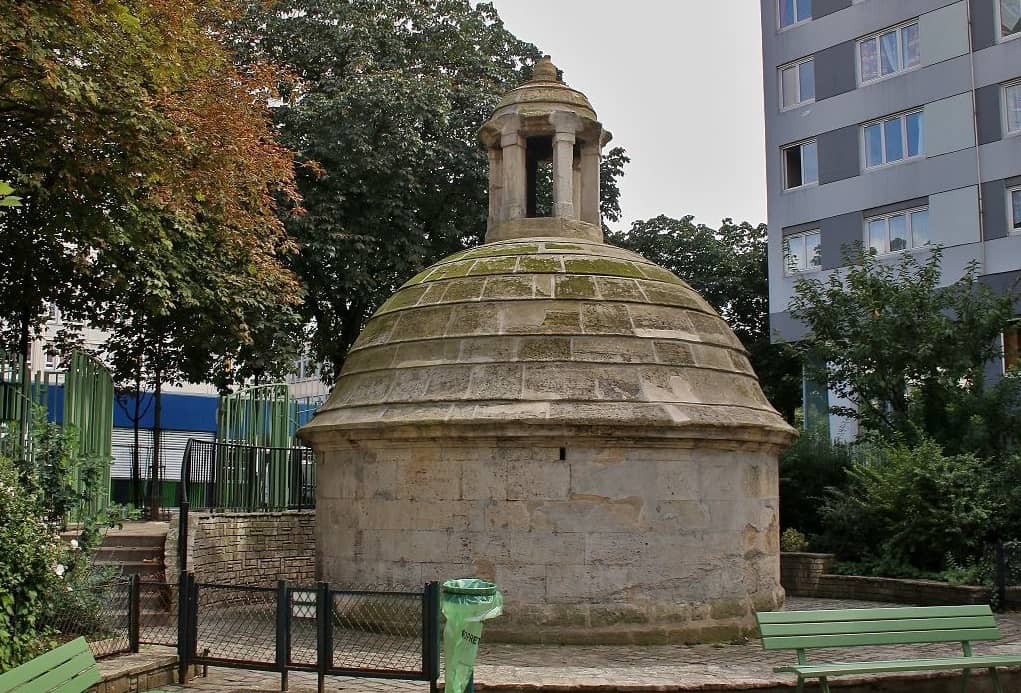
This covered and locked regard also protected the water it collected from pollution and thieves. The regard de la Lantern was built in 1583, and its aqueduct dates from the 15th and 16th centuries. Water no longer flows through this system, but sections of the aqueduct’s elaborate stone tunnels still survive. As does this attractive and mysterious-looking little regard; a survivor from another age.
•Regard de la Lanterne: Rue Compans at Rue Augustin-Thierry, 19th.
Mucha’s Maidens
It is tucked away, down a passage, and beyond the bedrooms of Marcel Proust and Anna de Noailles. Turn left at the ballroom, and there, at the end of a corridor, you will find yourself facing one of the most astonishing little shops in Paris. You have navigated the farthest reaches of the Musée Carnavalet and are now gazing at the fin de siècle jewelry store of Georges Fouquet, an Art Nouveau confection straight from a Belle Epoque land of dreams. Fouquet’s jewel box—which once resided on Rue Royale—was the creation of Alphonse Mucha, Paris’ famed poster artist. By 1901, when he designed Fouquet’s little shop, Mucha’s curved, flowing lines and long-tressed ladies had become so famous that many Parisians referred to Art Nouveau itself simply as the “Mucha style.”
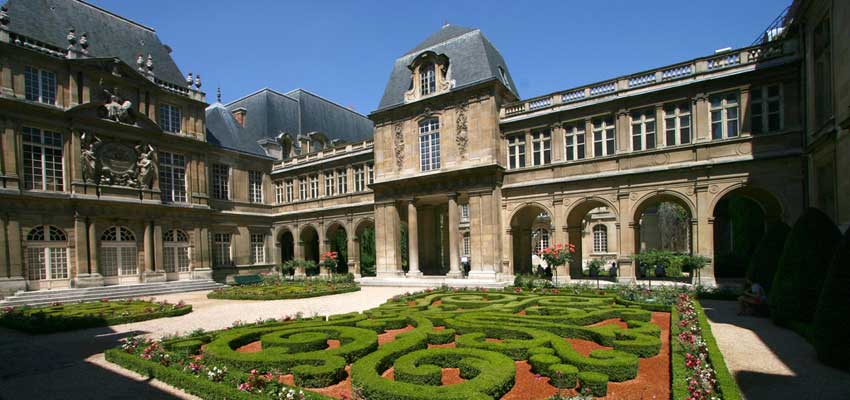
What you see before you is a carefully crafted concoction of peacocks, flowers, and lightly clad beauties. You probably are familiar with Mucha’s posters—reproductions are everywhere—but there’s nothing quite like this enchanting shop anywhere else in the world. Do look it up, and spend a few moments in Mucha’s special world, whose magic still exerts its considerable charm today.
•Musée Carnavalet: 23 Rue de Sévigné, 3rd.
Luxembourg Bees
Here’s your chance to see a real live apiary (a kind of beehive village) up close. Located in the southwest corner of the Luxembourg Gardens, this granddaddy of all Paris apiaries was founded a century and a half ago, in 1856. Its far-sighted founders started a bee-keeping school as well, which has kept bee-keeping alive and well throughout the city of Paris to this very day.

Several of Paris’ newer parks (Parc Kellermann, Parc Georges Brassens, and the Rucher de Levallois on the Ile de la Grande Jatte) now have apiaries, and growing numbers of Parisians are taking courses and installing beehives on their balconies and rooftops. You can even taste some of this honey: each autumn, the Luxembourg school sells its honey in the garden’s Orangerie. An unusual treat to bring back from Paris!
•Luxembourg Gardens, 5th.
Le Passe-Muraille
In a small square near the top of Montmartre is one of the oddest sculptures you could ever find. It’s actually a portion of a sculpture; a man’s head, upper torso, and right leg mounted on a stone wall and looking as if the man were emerging from the wall. And that is exactly the idea, for this sculpture is a portrait of the well-known Parisian writer Marcel Aymé, who lived nearby until his death, in 1967. Aymé is portrayed here in the guise of one of his most beloved characters; “Le Passe-Muraille,” or the “Passer through Walls,” a short story he wrote in 1943.
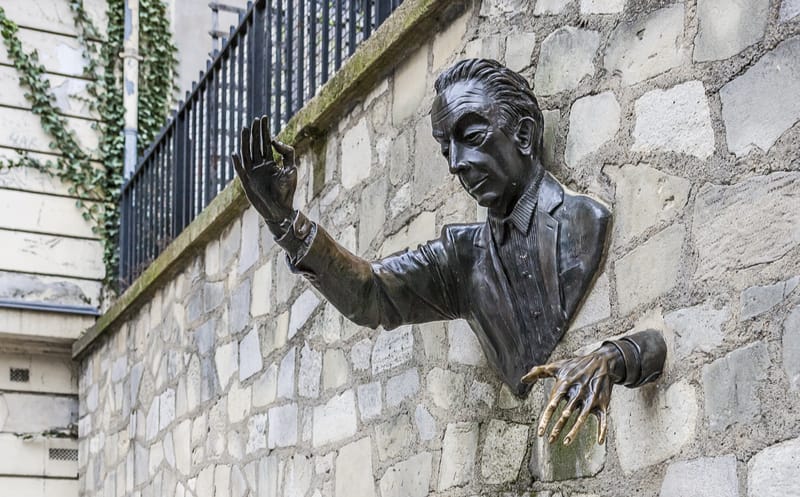
This story was turned into a hit French musical; renamed “Amour,” it also ran briefly on Broadway. But it is here in this lovely corner of Montmartre that “Le Passe-Muraille” lives on in stone and bronze; in this gentle and whimsical tribute to his creator, Marcel Aymé.
•Le Passe-Muraille: Place Marcel-Aymé, at the corner of Allée des Brouillards and Rue Norvins, 18th.
A Tribute to Heroism
While in Paris, keep an eye out for memorials and plaques dedicated to those who fought and died for France while resisting the German Occupation during World War II. One of the most startling of these is at the Square de la Roquette, not far from Père-Lachaise’s western entrance. Ironically, the Square de la Roquette is now an attractive garden with a pleasant fountain. But take a close look at the park’s gate. It’s scary, and rightly so, for this was once the entrance to a horrendous prison.

As you look at those barred windows, remember that some 4,000 Resistance fighters were once imprisoned here. An all-too-easily-overlooked plaque reminds the passerby that these prisoners “contributed to the Liberation of France.”
•Square de la Roquette: 147 Rue de la Roquette, 11th.
The Unknown Twin
France’s Henri IV gifted Paris with some of its most renowned landmarks, including the Louvre’s Waterside Gallery, the Pont-Neuf, the Place Dauphine, and the elegant Place des Vosges. Word of the Place des Vosges’ charms has been spreading; however, few still seem to know about its virtual twin, just north of the Place de la République. Here, with typical concern for his city’s well-being, Henri IV built a hospital for plague victims just outside the city’s walls. Like the Places des Vosges, the Hôpital Saint-Louis consists of a brick-and-stone quadrangle surrounding a tree-filled courtyard.
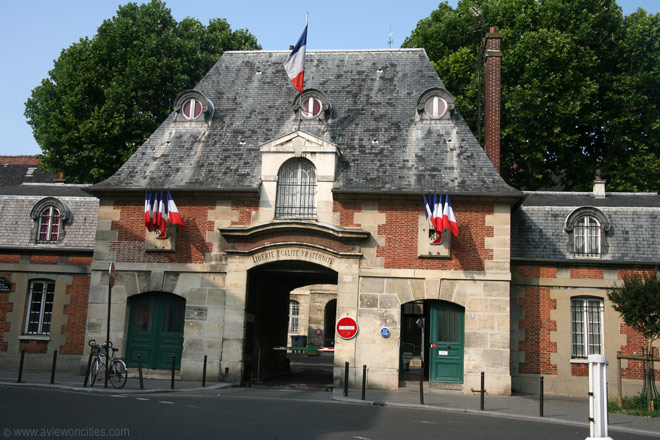
The similarities have prompted speculation that the architect of the Place des Vosges created this as well. Beyond the complex walled lie, other original buildings, including the chapel and the Pavillon Gabrielle; Henri is rumored to have frolicked with his favorite mistress, Gabrielle d’Estrées. Today’s modern hospital remains largely out-of-view.
•Hôpital Saint-Louis: enter through the original gate at 2 Place du Docteur-Alfred-Fournier, just off Rue Bichat, 10th. Open on weekdays.
A Secret Garden
Turn off of Rue d’Assas, in Montparnasse, and head down a narrow lane towards the rustic house ahead. To your right is the house’s hidden garden, a small jewel belonging to the sculptor Ossip Zadkine; he lived and created here from 1928 until his death in 1967. Zadkine, who survived a Jewish boyhood under the Russian Empire as well as front-line service during World War I, found a much-needed sense of peace here. “Come see my pleasure house,” he wrote to a friend; “you will understand how much a man’s life can be changed by a dovecote, by a tree.”
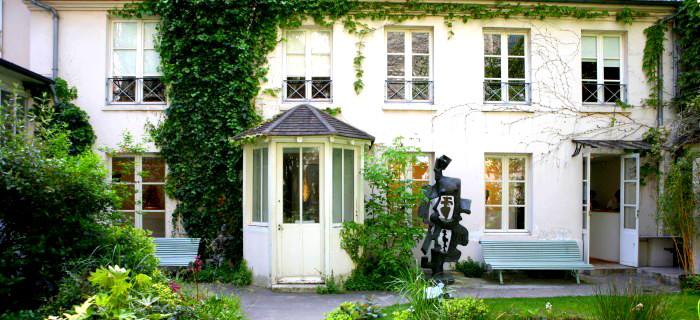
Inside the house is a small museum dedicated to Zadkine’s work, and the tiny garden is also filled with his sculptures, including the model for his masterpiece, the Rotterdam war memorial; a dramatic bronze figure with its arms outstretched and torso pierced with a jagged hole; much as Rotterdam suffered after Germany bombed its heart out. Fortunately, all this has been preserved, thanks to a bequest to the City of Paris by Zadkine’s wife, the painter Valentine Prax, and so you can come and enjoy the very dovecote and trees that once enchanted this famous sculptor.
•Musée Zadkine: 100 bis Rue d’Assas, 6th.
Lunching with Renoir
When two young artists, Claude Monet and Pierre-Auguste Renoir, began in 1869 to capture the fleeting effect of light on water and the effervescence of the moment. They started what we now know as the Impressionist Movement. They painted along the Seine, just to the west of Paris, and you can still find one of their favorite haunts; a river café called the Maison Fournaise, on the Ile de Chatou. In fact, it was the Maison Fournaise’s balcony that became the setting for Renoir’s famous Luncheon of the Boating Party.
After some bad years, the Maison Fournaise has been restored. Now, you can enjoy lunch or dinner in this special Place; Renoir called it “the most beautiful spot in all the environs of Paris”. Pick a sunny day, and while there, don’t miss the museum next door or the Impressionist Walk nearby.
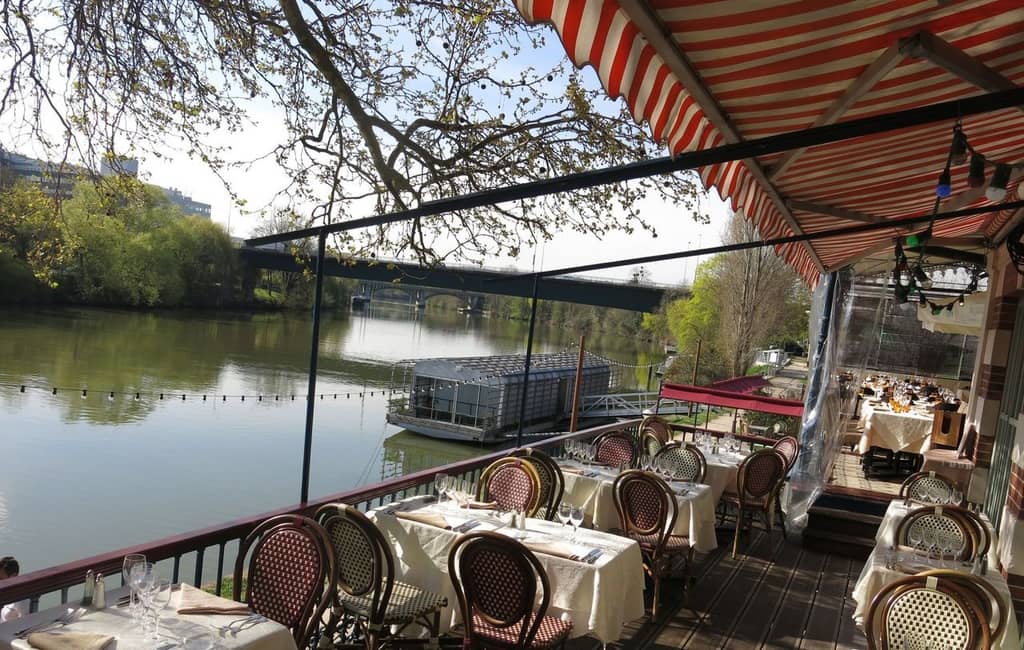
•Maison Fournaise: Ile de Chatou, 78400 Chatou. Tel: 01 30 71 41 91. To get there, take a car or RER line A1 to Rueil-Malmaison and the Chatou bridge. Exit on-ramp in the middle of the bridge down to the island. The Impressionist Walk (marked by signs) starts on the Chatou side of the river.
